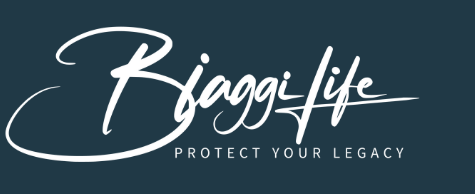Term Insurance vs Indexed Universal Life: Is There a Bias?
Term vs IUL: Uncovering Potential Biases in Life Insurance Choices

Term Insurance vs Indexed Universal Life: Is There a Bias? Short 1
Term Insurance vs Indexed Universal Life: Is There a Bias? Short 2
Term Insurance vs Indexed Universal Life: Is There a Bias? Full Video
Understanding Term Life Insurance
Term life insurance is straightforward.
You pay a low premium, like $29 a month for a 30-year term from a top carrier. If you die within the term, your beneficiaries get the payout.
However, at the end of the term, the coverage stops. If you have health issues and can't qualify for a new plan, you're left without insurance.
This simplicity makes term life a popular choice, but it has significant drawbacks, particularly for those who outlive their policy and still need coverage.
Pros of Term Life Insurance
The first pro of term life insurance is
affordability. It's perfect for those who want to secure their family's future without spending too much.
Another plus is its
simplicity. You pay a set amount, and if you pass away during the term, your family gets the money.
Plus, term life insurance offers
flexibility. You can choose how long you want the coverage—10, 20, or even 30 years.
Cons of Term Life Insurance
On the downside, term life insurance is
temporary.
When the term is up, so is your coverage. If you still need insurance, you’ll have to
reapply, usually at a
higher rate
because you’re older or maybe not as healthy.
Also,
term policies don’t build cash value. If you outlive the policy, there’s no financial return.
Indexed Universal Life Insurance (IUL) Explained
IULs offer more than just death benefits. They have investment components and flexible premiums.
With an IUL, you might pay $136 a month to keep your coverage until age 90 or even 120. These policies
accumulate cash value over time. By age 90, an IUL could build up over $200,000 in cash value and have a death benefit of $712,000.
Another perk is the
tax advantages. You can withdraw your premiums tax-free and borrow against the policy without paying taxes on the loan.
Pros of Indexed Universal Life Insurance
One big advantage of IULs is
lifetime coverage. Unlike term life, IULs make sure your beneficiaries get a payout no matter when you pass away.
They also
grow
cash value. This money can be used for all sorts of things, like paying for college or boosting your retirement income.
Plus, IULs offer
tax benefits. The cash value growth is tax-deferred, and withdrawals or loans against the policy can be tax-free.
Cons of Indexed Universal Life Insurance
However,
IUL premiums are higher
than term life premiums. This added cost can be tough for some people.
Also,
IULs are more complex. They take more effort to understand and manage compared to term life insurance.
Comparison: Term Life vs. IUL
When it comes to cost,
term life is cheaper initially. For example, $29 a month for term life versus $136 a month for IUL. The investment growth also varies. If you invest the difference between term and IUL premiums, at 5% interest, you might have about $74,999 after 30 years.
But,
term life loses coverage after 30 years, while
IUL continues to provide both death benefits and cash value.
Addressing Common Misconceptions
A lot of financial advice out there says you should get term life and invest the difference.
Folks like Dave Ramsey argue that
permanent policies, including IULs, aren’t cost-effective.
They say these policies only pay the face value upon death, not the savings.
But,
this view is outdated.
Modern IUL policies offer both the death benefit and the accumulated cash value. This misconception comes from older whole life policies, not the new IULs.
Refuting Misconceptions
Modern IULs provide both the death benefit and cash value accumulation, debunking the myth that only the face value is paid out.
They also offer policy
flexibility, allowing you to adjust premium payments and investment options. These criticisms are often based on old views of whole life policies, not the current IUL products.
Advantages of IULs
One of the main
advantages of IULs is flexible premiums. If you can’t afford the no-lapse premium, you can pay a lower minimum premium and still keep your coverage.
Another key benefit is the
long-term coverage. IULs provide insurance well beyond the typical term life period, which is crucial for long-term planning.
Plus,
IULs come with tax benefits. Withdrawals and loans against the policy are tax-advantaged, unlike external investments.
The Bias Toward Term Life Insurance
Investment professionals often push for term life because it channels funds into their investment products instead of insurance companies. This advice benefits their bottom line but might not be the best for consumers needing long-term security.
Understanding the Bias
Investment advisors often have a
financial interest
in recommending term life and external investments. They earn fees or commissions on managed investments.
Also, term life insurance is easier to understand and sell, making it a go-to for advisors wanting to keep things simple. The
complexity of IULs can lead to confusion, making term life seem like a straightforward option.
Conclusion
Term life insurance is a good option for those needing
low-cost,
temporary coverage. However, IULs offer more
comprehensive benefits, including
lifelong coverage,
investment growth, and
tax advantages.
The bias toward term life often overlooks these perks. It’s crucial to understand your needs and pick a policy that offers the best long-term value.
Discover the Truth with Biaggi Life
Looking for straightforward life insurance advice in Santa Rosa, CA? Trust
Biaggi Life to guide you with honesty and expertise. Contact Biaggi Life today to find the policy that truly meets your needs—because knowing what's real matters.




